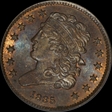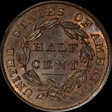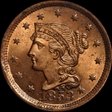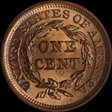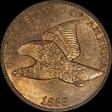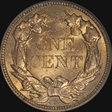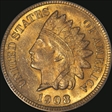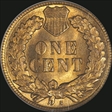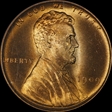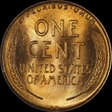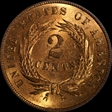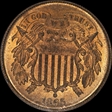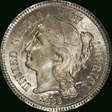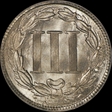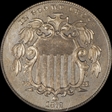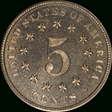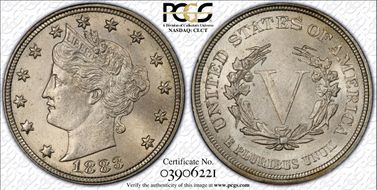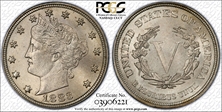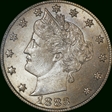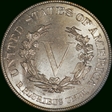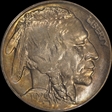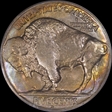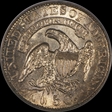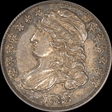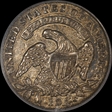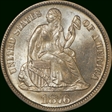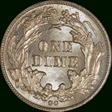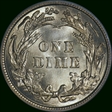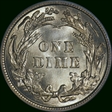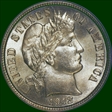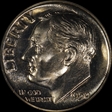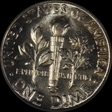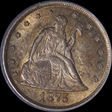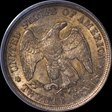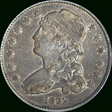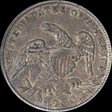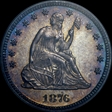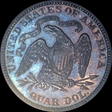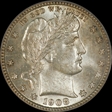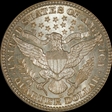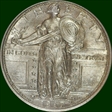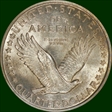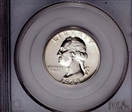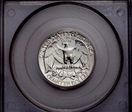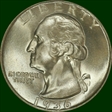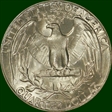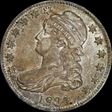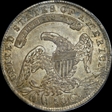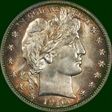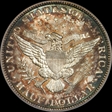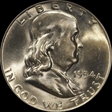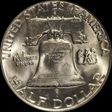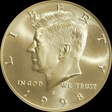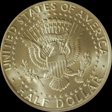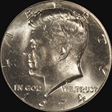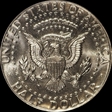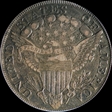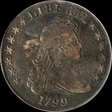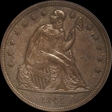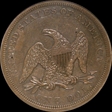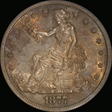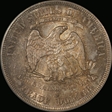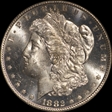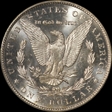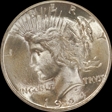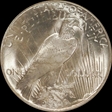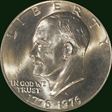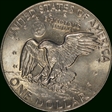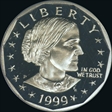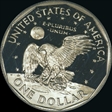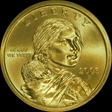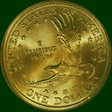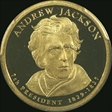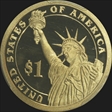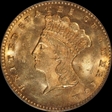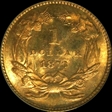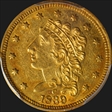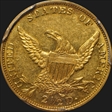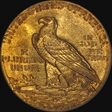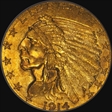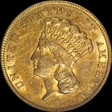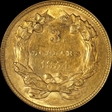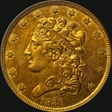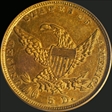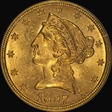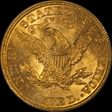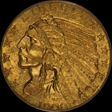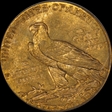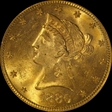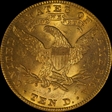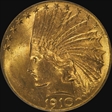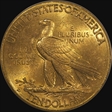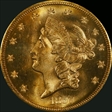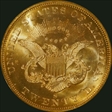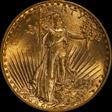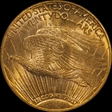OverlandTrail 的钱币相册
Boldly struck with clean, mark-free surfaces. Some spotty red areas, possibly from the Elmer Sears hoard. Designed and modified by William Kneass. A scarce issues in MS65
Boldly struck with clean, mark-free surfaces. Some spotty red areas, possibly from the Elmer Sears hoard. Designed and modified by William Kneass. A scarce issues in MS65
Cartwheel lustre and amazingly red color. Looks like it was minted yeasterday
Cartwheel lustre and amazingly red color. Looks like it was minted yeasterday
Due to the rising expense of making large copper cents the small flying eagle cent was designed and began production in 1856
Due to the rising expense of making large copper cents the small flying eagle cent was designed and began production in 1856
First cent struck at a branch mint. The "S" mint mark was added to the reverse of this beautiful, red and lustrous example. It looks just like it was minted yesterday.
First cent struck at a branch mint. The "S" mint mark was added to the reverse of this beautiful, red and lustrous example. It looks just like it was minted yesterday.
Honoring Abraham Lincoln's 100th birthday the cent was redesigned in 1909. The tiny reverse VDB initials for designer Victor D. Brenner caused an uproar resulting in their removal the same year.
Honoring Abraham Lincoln's 100th birthday the cent was redesigned in 1909. The tiny reverse VDB initials for designer Victor D. Brenner caused an uproar resulting in their removal the same year.
The two cent piece was produced to make up the slack in the hoarding of silver and gold coinage. Only partly successful due to eventual hoarding of all metal U. S. coinage during the war.
The two cent piece was produced to make up the slack in the hoarding of silver and gold coinage. Only partly successful due to eventual hoarding of all metal U. S. coinage during the war.
Big nickel interest influenced Congress to produce a new nickel three cent piece. Mainly used for redemption of booklets of 3-cent notes, derogatorily called shinplasters, and finally discontinued in 1889.
Big nickel interest influenced Congress to produce a new nickel three cent piece. Mainly used for redemption of booklets of 3-cent notes, derogatorily called shinplasters, and finally discontinued in 1889.
Only silver three cent piece minted in New Orleans. This denomination circulated widely when other small silver coinage was being melted and exported. Being only 75% silver and 25% copper the alloy was know as billion and worth less than 3 cents, thus our first subsidiary coinage. Note the bold "O" mint mark.
Only silver three cent piece minted in New Orleans. This denomination circulated widely when other small silver coinage was being melted and exported. Being only 75% silver and 25% copper the alloy was know as billion and worth less than 3 cents, thus our first subsidiary coinage. Note the bold "O" mint mark.
With virtually no silver or gold coins circulating the mint chose to strike 5-cent nickel pieces similar to their 3-cent cousins. Difficulty with the hardness of the metal caused many specimens show cracked dies, clash marks, and other mint errors. This coin Is a proof DDO, a very unusual proof with all 500 coins from one die.
With virtually no silver or gold coins circulating the mint chose to strike 5-cent nickel pieces similar to their 3-cent cousins. Difficulty with the hardness of the metal caused many specimens show cracked dies, clash marks, and other mint errors. This coin Is a proof DDO, a very unusual proof with all 500 coins from one die.
The redesigning of the five cent piece in 1883 was another collossal blunder by the mint's engraving staff. The "NO CENTS", "Racketter Nickel" variety depicted here was widely gold plated and passed as a gold half eagle. This specimen is from the famed Eliasberg Collection.
The redesigning of the five cent piece in 1883 was another collossal blunder by the mint's engraving staff. The "NO CENTS", "Racketter Nickel" variety depicted here was widely gold plated and passed as a gold half eagle. This specimen is from the famed Eliasberg Collection.
The redesigning of the five cent piece in 1883 was another collossal blunder by the mint's engraving staff. The "NO CENTS", "Racketter Nickel" variety depicted here was widely gold plated and passed as a gold half eagle. This specimen is from the famed Eliasberg Collection.
The redesigning of the five cent piece in 1883 was another collossal blunder by the mint's engraving staff. The "NO CENTS", "Racketter Nickel" variety depicted here was widely gold plated and passed as a gold half eagle. This specimen is from the famed Eliasberg Collection.
Bold strike and outstanding luster with only the slightest toning at the periphery graces this carefully preserved example, An obverse clash mark occupies the field from nose to neck.
Bold strike and outstanding luster with only the slightest toning at the periphery graces this carefully preserved example, An obverse clash mark occupies the field from nose to neck.
Ample mint luster peers through the dark, crusty toning of this well struck 1830's work-horse Philadelphia issue.
Ample mint luster peers through the dark, crusty toning of this well struck 1830's work-horse Philadelphia issue.
Old and even gray toning with some luster clinging to and around the devices. Some dirt still adheres to the wings, shield, and lettering.
Old and even gray toning with some luster clinging to and around the devices. Some dirt still adheres to the wings, shield, and lettering.
Silvery gray coloration with plenty of minty luster adorns the silky smooth fields of this Philadelphia issue.
Silvery gray coloration with plenty of minty luster adorns the silky smooth fields of this Philadelphia issue.
This late 18th century issue exhibits original silver-gray toning, even wear with smooth surfaces, and better than average strike. Some luster still resides in sheltered areas of the devices.
This late 18th century issue exhibits original silver-gray toning, even wear with smooth surfaces, and better than average strike. Some luster still resides in sheltered areas of the devices.
This example exhibits bold strike, just the slightest wear on the high points, and a satiny luster below the even gray toning.
This example exhibits bold strike, just the slightest wear on the high points, and a satiny luster below the even gray toning.
The 1839-C is one of two quarter eagle dates of the Classic design possessing the obverse "C" mint mark above the date. This coin has a nice green gold coloration combined with an early die state strike thus avoiding the numerous die cracks of later states. Luster abounds with some golden accents especially on the obverse. A rare coin with only a few graded higher
The 1839-C is one of two quarter eagle dates of the Classic design possessing the obverse "C" mint mark above the date. This coin has a nice green gold coloration combined with an early die state strike thus avoiding the numerous die cracks of later states. Luster abounds with some golden accents especially on the obverse. A rare coin with only a few graded higher
Mintage 20,583. Classic Half Eagle. Gold fever hit the country in the late 1820's as the yellow metal was discovered in Georgia and North Carolina. The gold rush that ensued triggered the establishment of federal branch mints at Charlotte, NC and Dahlonega, GA. The 1838 Classic half eagle was the first coin produced at the frontier Dahlonega Mint. This coin exhibits beautiful golden tone, semiprooflike surfaces, and fantastic eye appeal. From the North Georgia Collection
Mintage 20,583. Classic Half Eagle. Gold fever hit the country in the late 1820's as the yellow metal was discovered in Georgia and North Carolina. The gold rush that ensued triggered the establishment of federal branch mints at Charlotte, NC and Dahlonega, GA. The 1838 Classic half eagle was the first coin produced at the frontier Dahlonega Mint. This coin exhibits beautiful golden tone, semiprooflike surfaces, and fantastic eye appeal. From the North Georgia Collection
Ex Bass. Yellow gold with golden coppery accents. Luster somewhat subdued as usually seen with this issue
Ex Bass. Yellow gold with golden coppery accents. Luster somewhat subdued as usually seen with this issue
The loss of California gold with the sinking of the S.S. Central America in part caused the panic of '57. Gold dust, ingots, and freshly minted coins from the goldfields of California were shipped for a voyage around Cape Horn to banks on the East coast. The S.S Central America went down in a storm after passengers and crew were rescued. The gold, however, went down with the ship into the Atlantic. This coin was salvaged from crates of newly minted coins not affected by seawater. Many of the specimens look today as if they were minted yesterday. A mint-made die line through the lower left shield border lends the Spiked Shield nickname. Well struck and lustrous with a splendid reverse and a carefully preserved obverse. This lot is accompanied by Certificate of Authenticity S.S.C.A. #2153, signed by Tommy Thompson of the Columbus-America Discovery Group. Also included is the presentation box and faux book of issue, the latter inscribed to the Jayne Family.(#70000) (Registry values: P2)
The loss of California gold with the sinking of the S.S. Central America in part caused the panic of '57. Gold dust, ingots, and freshly minted coins from the goldfields of California were shipped for a voyage around Cape Horn to banks on the East coast. The S.S Central America went down in a storm after passengers and crew were rescued. The gold, however, went down with the ship into the Atlantic. This coin was salvaged from crates of newly minted coins not affected by seawater. Many of the specimens look today as if they were minted yesterday. A mint-made die line through the lower left shield border lends the Spiked Shield nickname. Well struck and lustrous with a splendid reverse and a carefully preserved obverse. This lot is accompanied by Certificate of Authenticity S.S.C.A. #2153, signed by Tommy Thompson of the Columbus-America Discovery Group. Also included is the presentation box and faux book of issue, the latter inscribed to the Jayne Family.(#70000) (Registry values: P2)




















